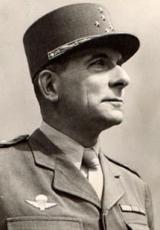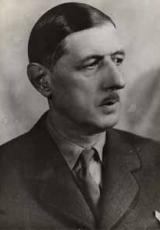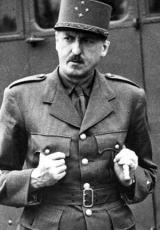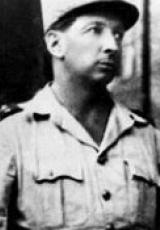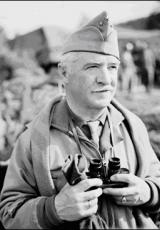Provence août 1944
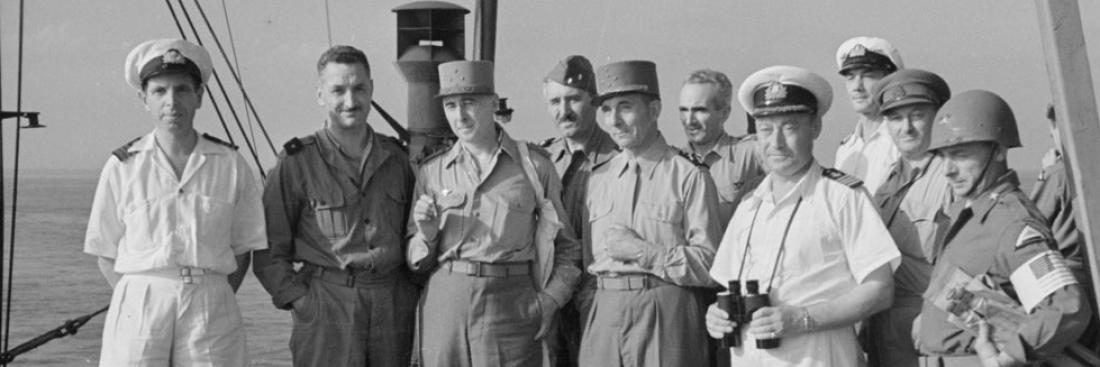
Provence August 1944 The Landings and the Liberation Since the Quebec conference (August 1943), an American plan to land in Provence, had been under consideration, to complement the landings in Normandy. During the Tehran conference (November 1943), Stalin expressed his agreement to this plan, whose application would greatly relieve pressure along the Soviet front. Churchill was opposed to it, preferring to give priority to the operations already underway in Italy to attack the Reich directly from the south. In the end it was President Roosevelt who had the casting vote in favour of the American solution. It was to be operation Anvil, renamed Dragoon, whose objectives were to target enemy troops, establish ports in deep water and then to protect the right flank of the American army coming from Normandy. The presence of shallow waters and the layout of enemy batteries determined the choice of landing beaches. D Day was set for the 15th August 1944.
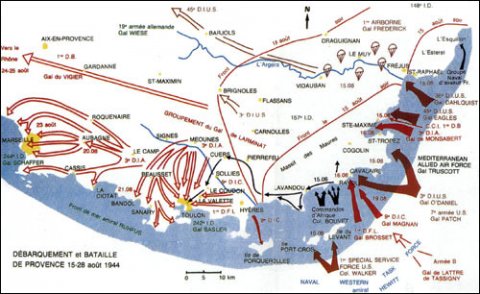
The Supreme Commander of the theatre of operations in the Mediterranean was the British General Wilson. The 7th American Army, commanded by General Patch, would form the expeditionary corps. It comprised the 6th Army corps (General Truscott) and an airborne division (General Frederick). It also included the B army, placed under the orders of General de Lattre de Tassigny, an officer already crowned a fighting legend and a man of panache. For the next instalment of events, de Lattre also had an advantage: he was well aware of the role that the "maquisards" (Resistance fighters) might play.
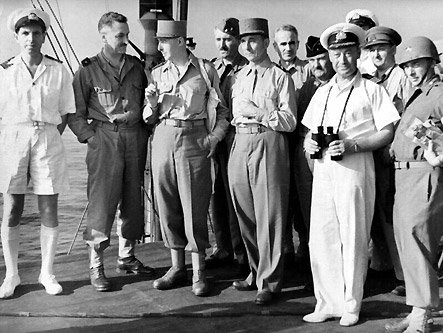
A compromise was reached regarding the position of French troops: General Patch would command them during the first phase of the operation and General de Lattre would take over tactical command following their engagement. The B army united five infantry divisions, two tank divisions (the 1st and 5th), two companies of Tabors and several reserve elements not yet allocated to divisions. Included were servicemen from the expeditionary corps that had basked in glory in Italy and soldiers freshly boarded in North Africa: some of French extraction, Muslim soldiers from Algeria, Tunisia and Morocco and troops from French West Africa and French Equatorial Africa etc. 600 transport ships and 1,270 landing craft would land this ground force, protected by 250 battle ships (including 14 French) consisting of the "Naval Western Task Force" of the American Admiral Hewitt, supported by aircraft from the American General Eaker's "Mediterranean Allied Air Force" (2,000 machines).
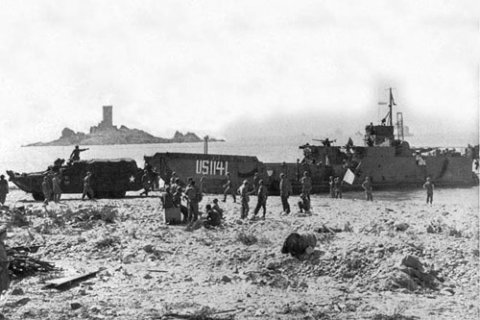
On the German side, the 8 divisions of the 19th Army, commanded by General Wiese, whose H.Q. was in Avignon, had been on a state of alert since the second week in August. For strategic reasons, the ships came in ten convoys from ports as far apart as Oran, Naples and Taranto, and, having gathered off the shore of Corsica, the allied fleet headed initially towards Genoa to mislead the enemy. But on the evening of the 14th, it set sail for the Provence coast.
That same evening, the French Forces of the Interior received three messages from London, the last of which "The chief is starving" was the signal for the launch of operations. On the 15th August, just after midnight, the "1st Special Service Force" (Colonel Walker) neutralised the batteries of the Hyères islands, whilst the African commandos (Colonel Bouvet) reached the coast near cap Nègre, which they later seized. The naval assault group (Commander Seriot), on arriving at the pointe de l'Esquillon, came up against the minefield at le Trayas. Around 4 am, 400 aircraft dropped more then 5,000 allied parachutists over the valley of l'Argens, whilst reinforcements and equipment arrived in gliders (in total, 10,000 parachutists would be in action on the ground by the end of the day).
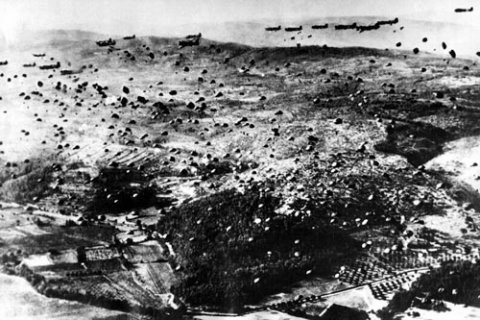
With the aid of local resistance fighters, they secured access routes to the landing areas. At dawn, fierce aerial and naval bombardment broke out along the coast, destroying the German positions held by General Basler's 242nd division. At 8 am, American waves of attack from the 3rd DIUS (General O'Daniel), 36th DIUS (General Dahlquist) and 45th DIUS (General Eagles) were launched from landing craft to come ashore between Cavalaire and Saint-Raphaël, on beaches codenamed Alpha, Camel and Delta respectively.
Amongst them were soldiers from General Sudre's French Combat Command 1 (CC1). On the evening of the 15th August, two bridgeheads were secured at either end of Fréjus. Of the 100,000 or so allied troops who landed, about a thousand were killed or went missing. The following day, most of the B army landed: the 1st DFL at Cavalaire and the 3rd DIA at la Foux etc. On the 17th August, de Lattre established his command post at Cogolin.
The strategy was set: American troops were to advance via upper Provence towards l'Isère and the Rhone valley. The French would take the ports of Toulon and Marseille.
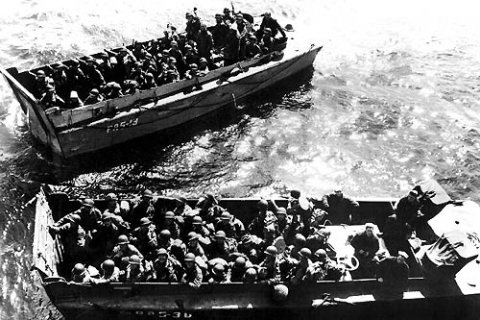
On the 17th August, in fact, Hitler ordered the 19th German army to retreat towards the north: only those divisions stationed in the two large ports were to hold out at all costs. The 11th Panzer division, which had initially left the Toulouse region on the 13th August to spread out ahead of the landed troops, was hounded by the maquisards from the Hérault and Gard regions, attacked by the American Air force and, under severe pressure, retreated towards the north without having accomplished its mission. On the 18th August, the zone occupied by the Allies extended to 30 km. The previous day, 130 B26 had once again bombarded the coastal defences. The 3rd DIUS broke through in Cuers and Castellane etc. The Americans were now able to continue on their way towards la Durance. Part of the "1st Special Service Force", alongside the FFI, pushed back more German units towards the Alps, liberating the towns of the Côte d'Azur. De Lattre wanted to move quickly: the enemy had to be outflanked before they had time to secure their positions. But logistics also had to taken into account: along the coast, ships could only deposit men and equipment very slowly. He decided that he would gather his troops ahead, sending units towards the combat zone as they arrived.
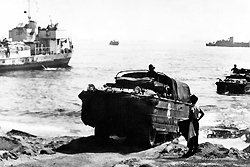
The 1st DFL (General Brosset), which was to take Hyères, advanced along the coast and the 9th DIC (General Magnan) manoeuvred via the mountains. The 3rd DIA (General de Monsabert) took Toulon from the rear and advanced towards Marseille. These operations were supported by naval artillery. At Toulon, the German garrison was reinforced by the 242nd division, which had retreated to the port: a total of around 25,000 men, under the command of Admiral Ruhfus, commander of the Kriegsmarine in Provence. On the allied side, de Lattre only had about 16,000 men available. On the 19th August, the 3rd RTA (Colonel de Linarès) was on the outskirts of the town. The 9th DIC had become increasingly involved at the junction of Pierrefeu and Toulon, supported by troops from the 1st DB (General du Vigier). The same day, having attacked and taken the Maurannes battery, the African commandos seized le Coudon; on the days that followed, it was the turn of the Shock battalion (Colonel Gam-biez) to take le Faron, these two forts controlling the harbour of Toulon. On the 22nd and 23rd August, the 9th DIC and the 1st DFL fought in the town: "Marsouins", Algerians, Senegalese and Free French vied with each other in their courage as they advanced.
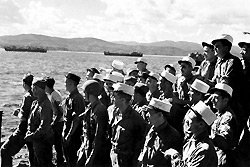
The German garrison took refuge on the Saint-Mandrier peninsula, defended by a battery of 340: they would hold out until the 28th August, although a victory parade had already been held the day before in the jubilant town.
De Lattre had been planning the attack on Marseille since the taking of Toulon, hoping for it to be around the 22nd/23rd August. But fighting carried on in Toulon and events had to be hurried along. General de Monsabert decided to surprise the enemy. On the 21st August, rioting broke out in Marseille: the FFI confronted the German troops. On the 22nd August, the 7th RTA was at le Plan de L'Aigle, whilst Colonel Le Blanc's GTM closed the road to Aix. Aubagne and Géménos were the settings for violent clashes. General Guillaume's Tabors surrounded Marseille. On the 23rd, the 7th RTA and resistance fighters began fighting in the rebel town. An attempt at talks with the German command was unsuccessful. On the 25th August, the 3rd and 7th RTA, CCI and FFI, advanced towards Notre-Dame de la Garde.
There were heavy losses, but enemy strongholds collapsed one by one. On the 27th August, the 1st Moroccan Tabor division captured the fort Saint-Nicolas.
On the 28th, General de Monsabert received the surrender agreement from General Schaeffer, the commander of the 244th German division. That same day in Toulon, Admiral Ruhfus surrendered to the commander of the 9th DIC. The capture of these two major ports was achieved a month ahead of schedule. Until the victory, Marseille and Toulon would play a vital role in re-supplying the allied armies: more than 900,000 men and 4 million tonnes of equipment would pass through there. At the same time, inland, Résistance forces had taken the offensive: through sabotage and guerrilla action, the maquisards provoked the enemy's retreat. The French were able to join up with the Americans and start the pursuit of the 19th German army: by the 15th August, troops of the 1st DB had reached Avignon.
On the 28th August, de Lattre sent a telegram to General de Gaulle: "... today, D-Day +13, in my army's sector, the only Germans left are either dead or captive". Provence was liberated.
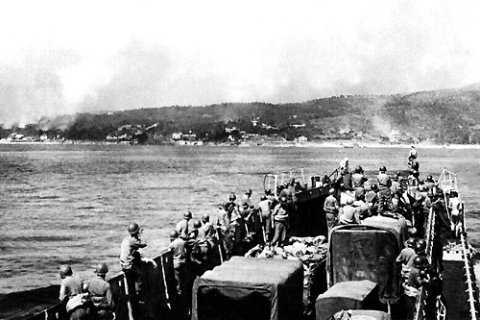
Between the 5th and the 25th September, it was the turn of the second wave of the French Army, on the orders of General Béthouart (2nd DIM, 5th DB, etc.) to land and join up with the units of the first wave. In the Alpes-Maritimes, the Americans and Resistance fighters carried on fighting through the autumn. Following fierce confrontations in the Authion mountain range, the 1st DFL would finally crush the last enemy pockets (Saorge and Fontan etc.) in April 1945. Of these events, there often remains just the memory, marked by plaques and monuments which, from Villecroze to Cogolin and from Allauch to le Thoron, are visual reminders of the action involving shrapnel and gunfire and of both civilian and military victims. Walkers can also find reminders of the landings in the ruins of the fortifications dotted along the coast. It is also possible to visit the memorial of Mont-Faron, inaugurated on the 15th August 1964 by the President of the Republic, General de Gaulle. There are two floors covering the history of the fighting, through audio-visual displays and exhibitions of objects as well as personal documents belonging to the key players.
The national cemeteries:
The bodies of soldiers from the French army who died during the Battle of Provence are contained in three national cemeteries. Following the fighting of August 1944, the dead were buried where they fell or in the local cemeteries of the various towns and villages of Provence. At the Rayol-Canadel (Var), members of the Texier commandos who died during the attack on Cap Nègre were buried on a piece of ground that, in 1946, was developed into a small cemetery. As this was threatened with closure, the mayor of the commune, Mr. Gola, and the former Chief of the African Commandos, General Bouvet, appealed to Mr. Jacquinot, the Minister for Ex-servicemen, who decided, in August 1950, to keep the graves where they were and later turn this into a national cemetery. There are five "in memoriam" graves to the commando soldiers, whose bodies were returned to their families.
From 1955, an extensive project was being studied for bringing together the bodies of all servicemen killed in the French Midi between 1939 and 1945. At the same time, General Koenig requested that a cemetery be created to commemorate the landings in Provence. The project was agreed in March 1960 and the Minister for Ex-servicemen, M. Triboulet, accepted the donation of a parcel of land at Boulouris from the municipal council of Saint-Raphaël. In March 1964 the operation began to bring together the 464 exhumed bodies from the council cemeteries of the Var region: Draguignan, Toulon, Hyères and Solliès-Pont, etc. On the 15th August 1964, the 20th anniversary of the landings, the President of the Republic, General de Gaulle, inaugurated the national cemetery. In 1957, the choice of location for a large national cemetery in the south-east settled on the site of Luynes in Aix-en-Provence (Bouches-du-Rhône). Work commenced in 1965, with the aim of bringing together the bodies of all those servicemen who died in the two world wars and were buried in local cemeteries. Operations took place in 1967 and 1968 across 9 départements: Pyrénées-Orientales, Aude, Hérault, Gard, Vaucluse, Bouches-du-Rhône, Var, Alpes de Haute-Provence and Alpes-Maritimes. Some bodies claimed by family were returned, whilst others, 11,424 including 3,077 from the 1939-1945 war, were re-interred at Luynes. The Minister for Ex-servicemen, M. Duvillard, inaugurated the new cemetery on the 27th September 969. At Luynes and at Boulouris, each grave is marked by a white enamelled concrete tablet bearing an individual plaque and engraved with a denominational symbol, depending on the religion. The maintenance of these three cemeteries is permanently carried out at the State's expense.


